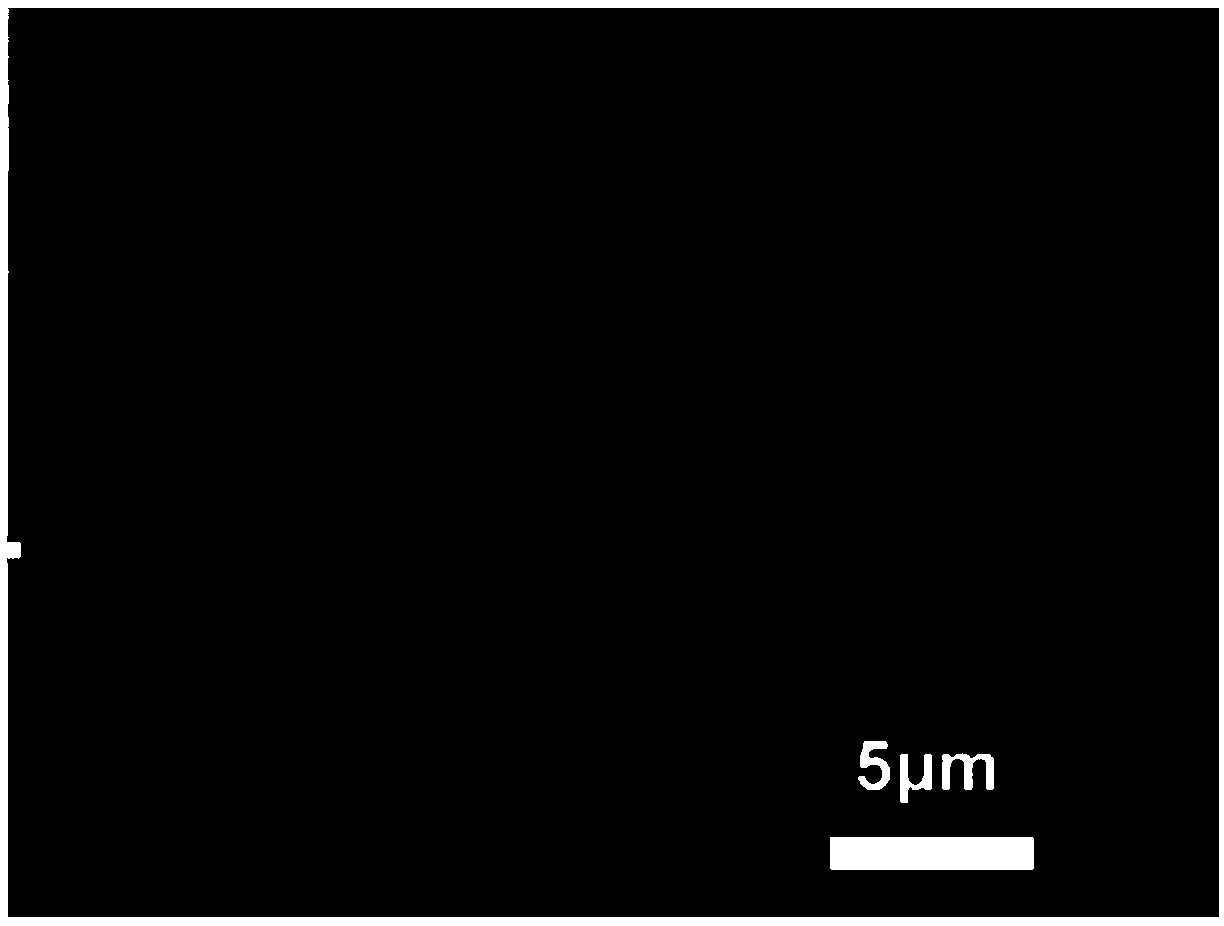Method for preparing single ultra-long micron or nanometer conductive fiber
A nano-conductive, single-fiber technology, applied in the direction of fiber type, fiber treatment, fiber chemical characteristics, etc., can solve the problem of limited application, unstable electrospinning fibers, and it is difficult to prepare highly oriented, separable single-length fibers. Fiber and other problems, to achieve the effect of stable vertical drop and improved electrical conductivity
- Summary
- Abstract
- Description
- Claims
- Application Information
AI Technical Summary
Problems solved by technology
Method used
Image
Examples
Embodiment 1
[0032] Electrospinning prepares semiconductor photocatalytic materials into fibers with diameters of microns or nanometers, and uses photocatalytic methods to reduce metal salts and attach them to the surface of fibers to form micron or nanoscale conductive fibers. The method steps are as follows:
[0033] Step a1, when preparing the spinning solution, adding the semiconductor photocatalyst material and its dispersant, and dispersing to obtain the spinning solution;
[0034] Step a2, on the substrate, using the electrospinning principle to make the spinning solution obtained in step a1 into micron or nanometer single fibers;
[0035] Step a3, immersing the fiber obtained in step a2 into a metal salt solution, reducing the metal ions on the surface of the fiber to elemental metal under light irradiation; drying and sintering to obtain a single ultra-long micron or nanoscale conductive fiber.
[0036] Concretely adopt preferred embodiment as follows:
[0037] (1) Add 1.0gTiO ...
Embodiment 2
[0040] Electrospinning prepares micron or nanoscale fibers containing reducing agents. The fibers are immersed in a metal salt solution, the metal is reduced, and after sintering, it adheres to the fiber surface to form micron or nanoscale conductive fibers. The method steps are as follows:
[0041] Step b1, when preparing the spinning solution, adding the metal reducing agent and dispersing to obtain the spinning solution;
[0042] Step b2, on the substrate, using the electrospinning principle to make the spinning solution obtained in step b1 into micron or nanometer single fibers;
[0043] Step b3, immerse the fiber obtained in step b2 into the metal salt solution, and under the action of the metal reducing agent in the fiber, the metal ion is reduced to elemental metal on the surface of the fiber; after drying, it is sintered in a nitrogen atmosphere to obtain a single ultra-long micron Or nanoscale conductive fibers.
[0044] Concretely adopt preferred embodiment as foll...
Embodiment 3
[0048] Micro or nano fibers are prepared by electrospinning. The fibers are immersed in the silver mirror reaction solution, and the silver is reduced and aggregated on the surface of the fibers to form micro or nano conductive fibers. The method steps are as follows:
[0049] Step c1, dissolving the reducing agent of the high polymer and silver nitrate, mechanically stirring until the solution is uniform, and then standing still to obtain a spinning solution;
[0050] Step c2, using the electrospinning principle to prepare the spinning solution in step c1 into micron or nanometer single fibers on the substrate;
[0051] In step c3, immerse the fiber obtained in step c2 in a silver nitrate solution, then transfer it to the solution where the silver mirror reaction is taking place for reaction, dry and sinter to obtain a single ultra-long micron or nanometer conductive fiber.
[0052] Concretely adopt preferred embodiment as follows:
[0053] (1) Add 1.0g of PVB (polyvinyl bu...
PUM
| Property | Measurement | Unit |
|---|---|---|
| transmittivity | aaaaa | aaaaa |
| reflectance | aaaaa | aaaaa |
Abstract
Description
Claims
Application Information
 Login to View More
Login to View More - R&D
- Intellectual Property
- Life Sciences
- Materials
- Tech Scout
- Unparalleled Data Quality
- Higher Quality Content
- 60% Fewer Hallucinations
Browse by: Latest US Patents, China's latest patents, Technical Efficacy Thesaurus, Application Domain, Technology Topic, Popular Technical Reports.
© 2025 PatSnap. All rights reserved.Legal|Privacy policy|Modern Slavery Act Transparency Statement|Sitemap|About US| Contact US: help@patsnap.com

